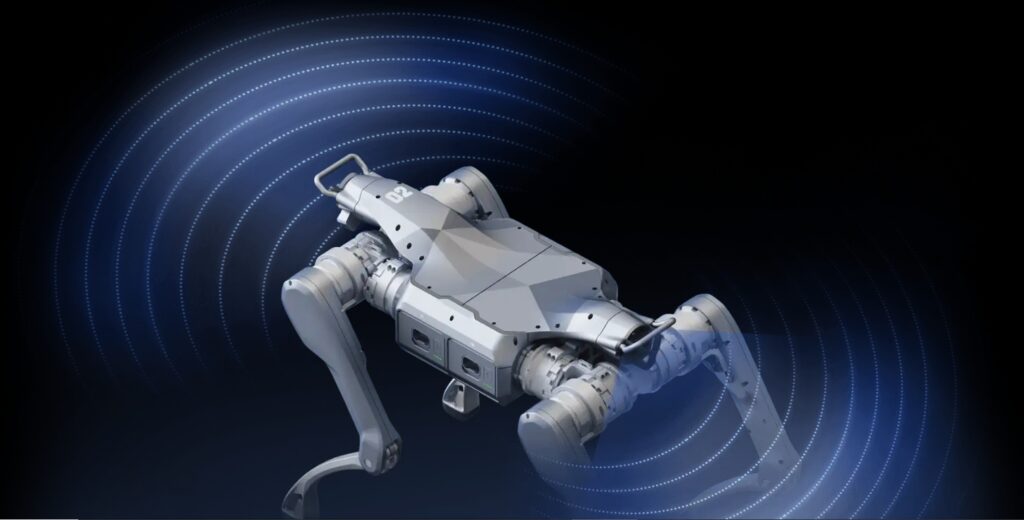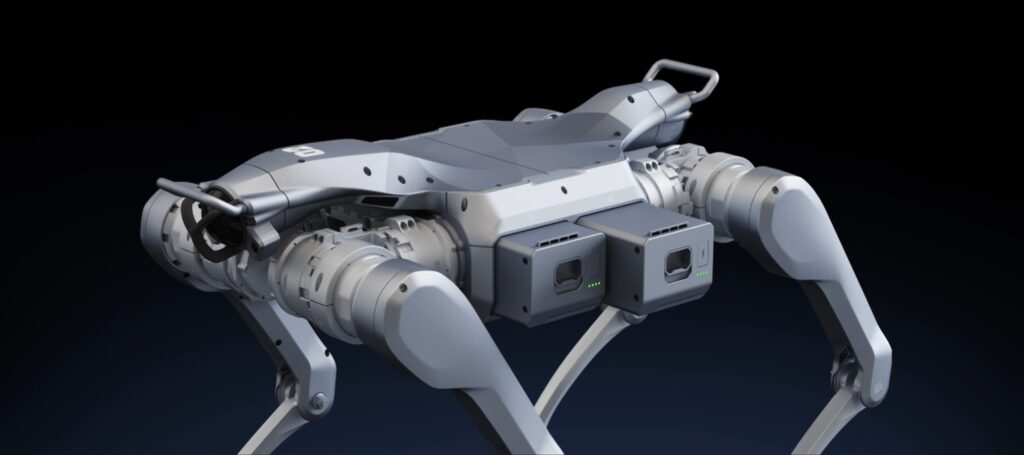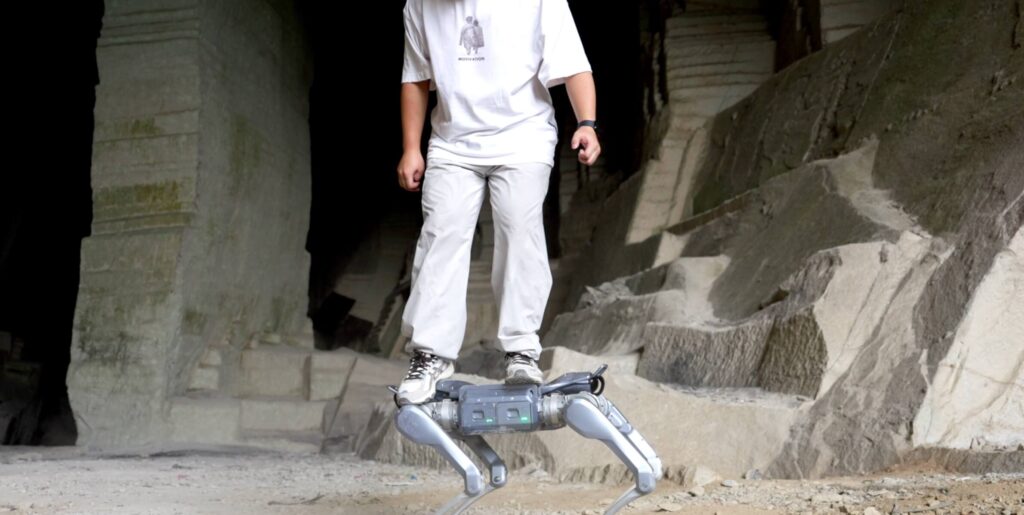
Unitree Robotics officially released its new quadruped robot dog, Unitree A2 “Interstellar Shadow Hunter,” which, with its lightweight design, robust performance, and adaptability to complex scenarios, sets a new benchmark as an industry-grade mobile hardware platform.
Weighing only 37 kilograms (including battery), the Unitree A2 features a composite structure of aluminum alloy and high-strength engineering plastics, balancing strength and lightweight requirements. Equipped with a dual-battery hot-swappable system, it achieves a no-load range of 20 kilometers and a loaded range of 12.5 kilometers with a 25 kg payload. It also supports operation in extreme environments from -20°C to 55°C, demonstrating excellent environmental adaptability.

In terms of performance, the A2 is equipped with 12 high-power-density motors, achieving a maximum running speed of 5 meters per second. It can easily handle complex terrains such as 45° slopes and 30 cm high steps. Its maximum climbing height reaches 1 meter, and its joint torque is approximately 180 N·m. It can not only carry a 100 kg adult for jumping and downhill movements but also walk continuously for 3 hours with a 30 kg load, completing a 12.55 km loop around a lake, showcasing outstanding stability and endurance.

The perception system is another highlight of the A2. It features an industrial-grade LiDAR unit at both the front and rear, paired with high-definition cameras and a front-mounted spotlight, enabling 360-degree blind-spot-free environmental detection and significantly improved 3D mapping efficiency. Standard equipped with an 8-core high-performance CPU and an Intel Core i7 processor, it supports secondary development. Users can optionally equip a high-computing-power expansion dock and wheel-leg conversion components to further expand application scenarios.
Currently, the Unitree A2 has demonstrated application potential in scenarios such as express delivery, mountain goods carrying, and industrial inspection. It is expected to play a crucial role in areas such as logistics transportation, emergency rescue, and security patrol in the future.

What are ESD components, and what is their importance in mobile phones? The significance of built-in ESD components.
ESD components are specialized electronic components designed to protect electronic devices from the effects of electrostatic discharge (ESD). Electrostatic discharge is a sudden release of electrical charge that can potentially damage electronic devices, leading to device malfunctions or a shortened lifespan. ESD components are designed to absorb, conduct, or dissipate electrostatic discharges to prevent damage caused by static electricity.
In mobile phones, the primary role of ESD components is to protect the internal electronic components from the harm caused by electrostatic discharge. Various circuits and components inside the phone are highly sensitive to ESD, which is why multiple ESD components are typically used in the phone’s design to provide protection. These components may include diodes, ESD diode, MOSFET and more.
Specifically, ESD components in a mobile phone may serve the following purposes:
Interface Protection: Various interfaces of the phone, such as the charging port and headphone jack, may require ESD components to prevent damage from electrostatic discharge.
RF Circuit Protection: RF circuits in mobile phones are highly sensitive to ESD and require ESD components to safeguard these critical circuits.
Processor and Memory Protection: Processors, memory, and other crucial components in the phone also require ESD protection to ensure the device’s normal operation.
Touchscreen and Display Protection: The touchscreen and display are integral parts of a mobile phone that also require ESD components to prevent static electricity damage.
In summary, ESD components play a crucial role in protecting the internal electronic components of a mobile phone from damage caused by electrostatic discharge, ensuring the phone’s proper operation and longevity.